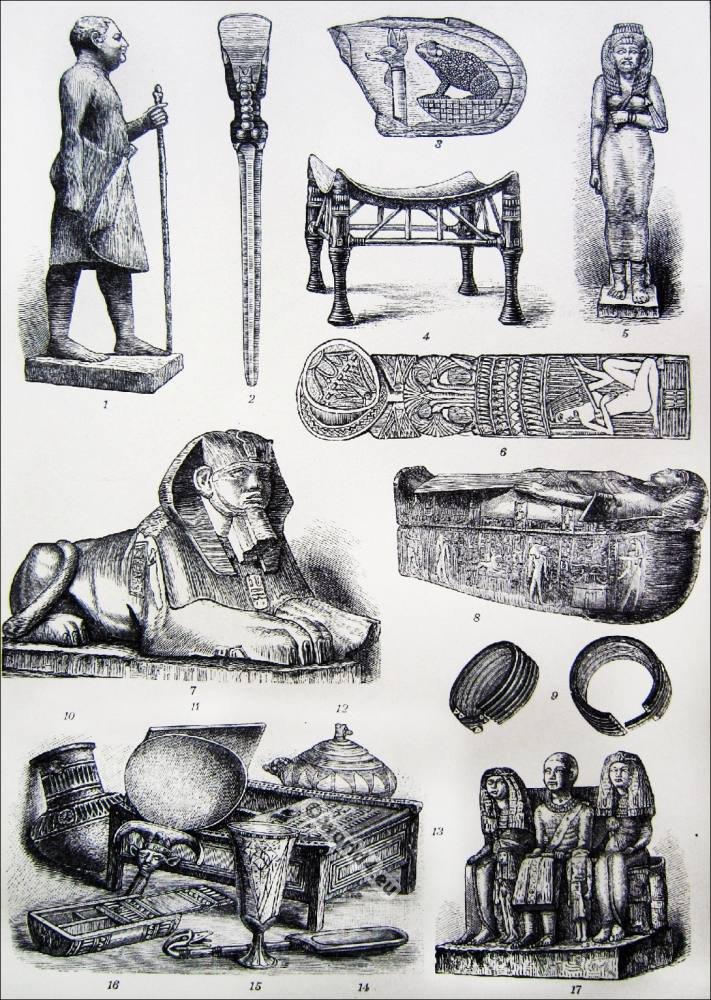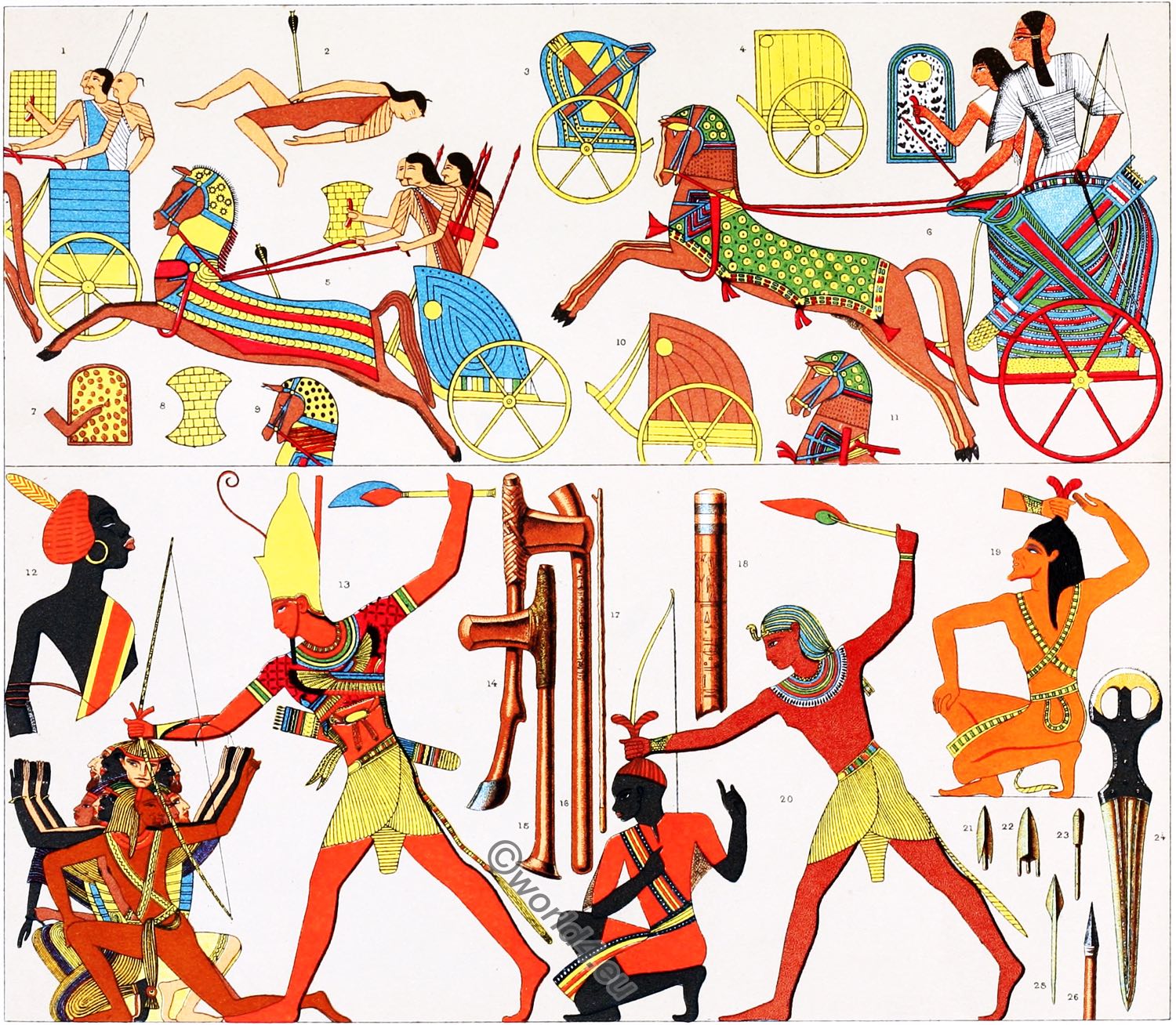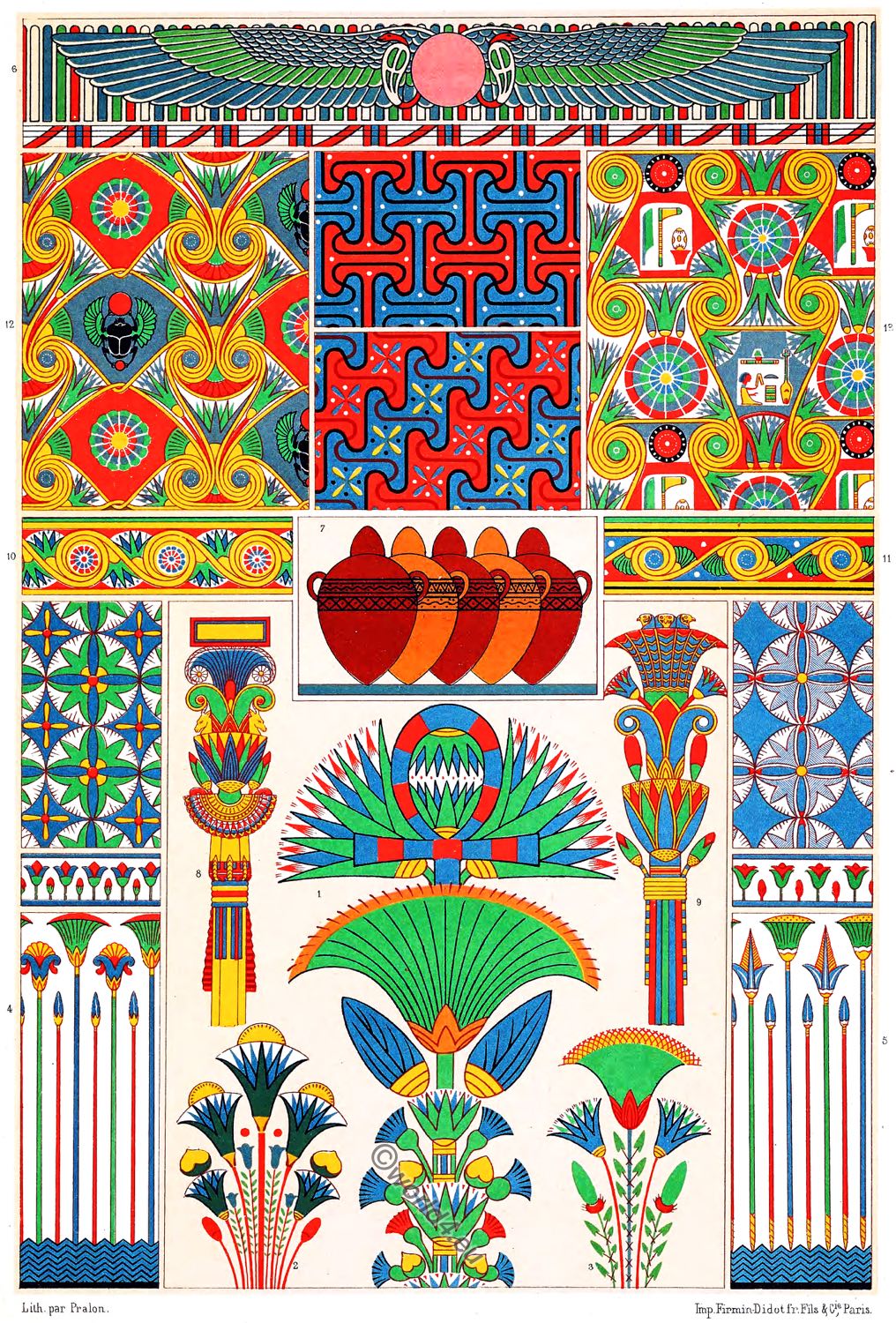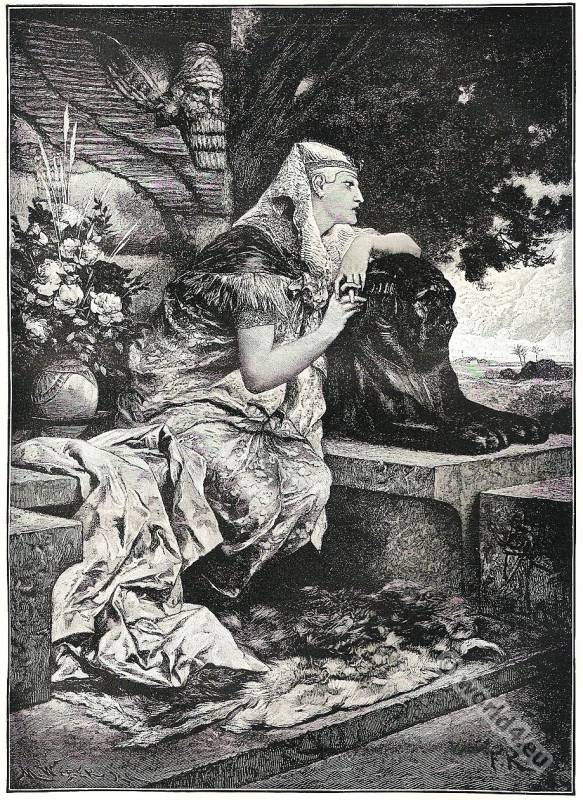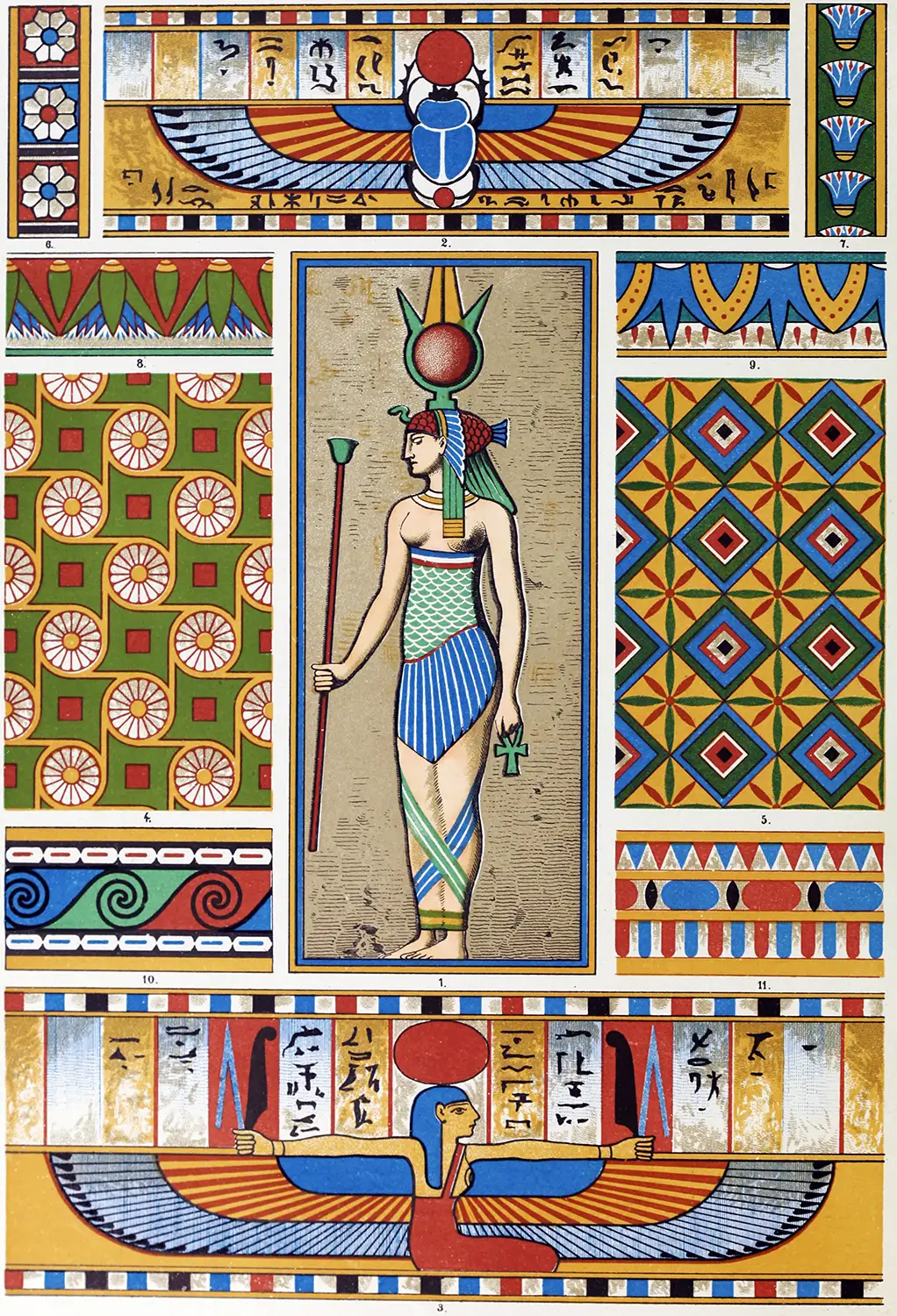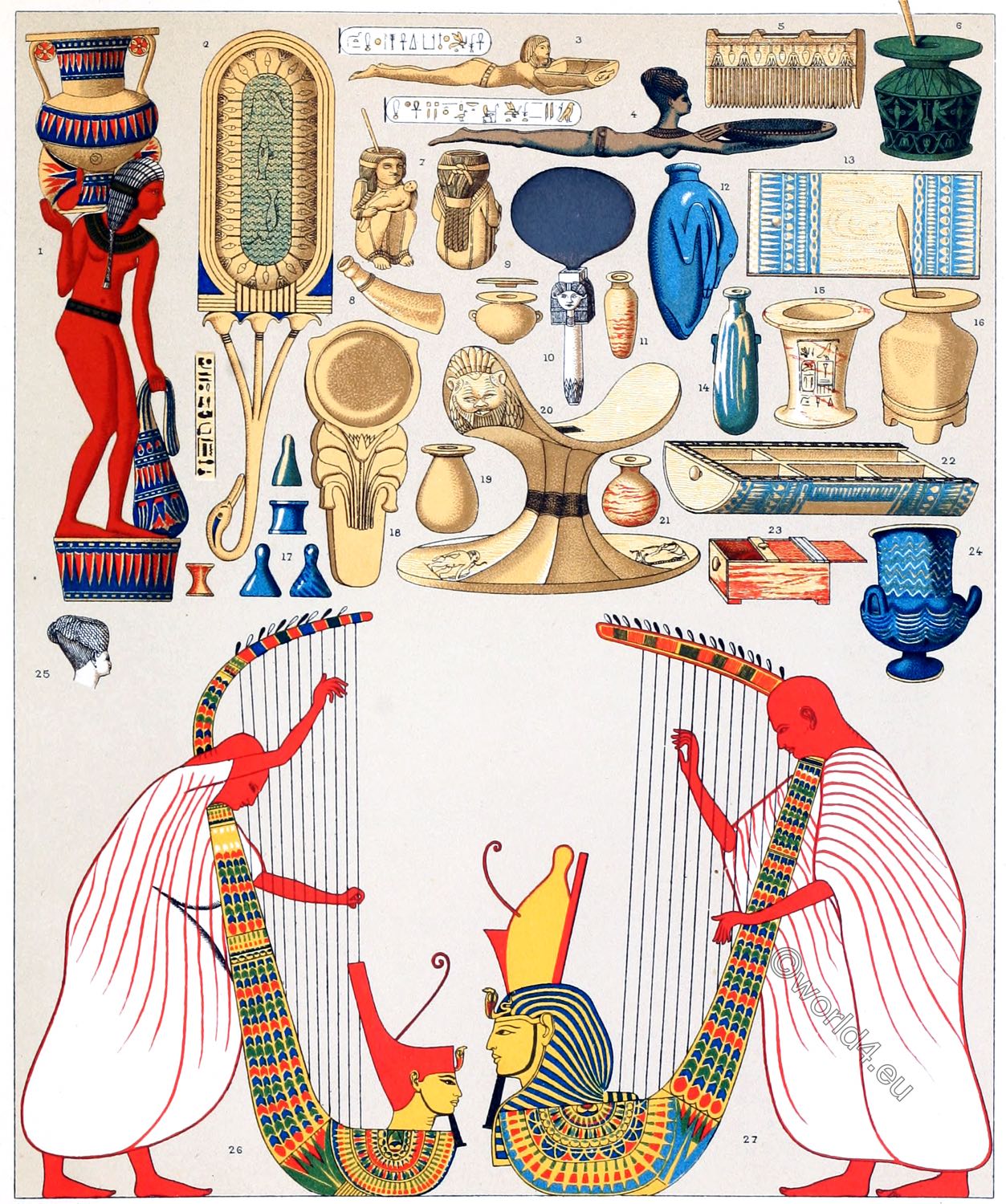
EGYPT HOME APPLIANCES. PRIESTLY CLOTHING.
No. 1. perfume container, consisting of a slave, who carries a vase on his shoulder and in his hand a sack in which fragrant plants are to be thought to be located. (A frequent allusion to those subjugated peoples who had to pay their tribute in the form of ointments, perfumes, etc.). Made of painted and gilded sandalwood.
No. 2. Sacrificial scoop. This device was used to offer liquid donations, as evidenced by its shape and decoration with floating fish and water plants. The handle is formed by a lotus stem, which ends in three flowering branches on one side and a swan head on the other. The scoop is provided with an inscription, especially next to it, which contains some royal signs.
No. 18. Fragment of a perfume box.
No. 17. small enameled stones of the same shape but of different colour. They seem to have been part of board games.
No. 3. Alabaster incense spoon.
No. 4. Ebony incense spoon. The handle is formed by a naked Ethiopian woman in a floating position. She wears a high, elaborate hairstyle, a wide necklace and a narrow belt. The jewellery was once gilded. Such belts of leather and glass jewellery are still worn by Nubian dancers today. On the arms the figure holds a bowl in the shape of a fish, which can be closed with a lid. This device, which bears the royal name of a pharaoh of the 18th dynasty, was made about 1800 years before Christ.
No. 25: Fragment of a figure from the same apparatus.
No. 10. Polished metal mirror with ivory handle.
No. 13 and 22. toilet box with various compartments and its lid, which was attached to it with two hinges and could be closed by pressing a protruding button.
No. 8. Cupping Horn. The same was found in Memphis among other antiquities. The upper part was probably closed by a leather flap, as can still be seen today on the cupping glasses used by Arab barbers.
No. 23. Box of fir wood. It contained a ring with the name Amenophis II.
No. 20. Wooden pads for the head when sleeping, called Uol. These bases are still in use today on the banks of the Nile and in a similar form by other ancient peoples, in Japan, in America and on Australian islands.
No. 5. Comb.
Nos. 6, 9, 11, 12, 14, 15, 16, 19, 21 and 24.
Vases of various materials and shapes, mostly used for storing ointments and perfumes. At no. 9 you can see how these vases could be closed tightly by lids with pegs. The eyelets and handles on numbers 9, 12 and 14 show that these vials could also be carried on strings.
No. 26 and 27. Priests playing the harp. It was part of the religious rules for the Egyptian priests that they wore their head and face clean-shaven, because they were only allowed to approach the gods purely. According to Herodotus they shaved themselves every three days. These rules of absolute cleanliness also required that their robes had to be made of flax. They were very fine, light and white. Like the Jewish priests, the Egyptian priests also had to be careful of any uncleanliness. If a dead insect was found on their garments, they were subject to severe punishment. Around their necks the priests wore the figures of the gods and goddesses they served, or their symbols.
Their clothing consisted of a short tunic, called a shenti, and over it they wore a rich coat, kalasiris. The instruments played by the two priests differed from modern harps only in that they had no crossbar at the front. Their name was Buni and they were only played with the hand, not with the plectron. The largest Egyptian harps known to man are six and a half feet high. One of the ones shown here has eleven strings, the other thirteen. In the Louvre there is a fully preserved triangular harp with twenty-one strings. The harps are taken from the wall paintings in the tomb of Ramses IV, the first king of the XIXth dynasty, which began in 1474 BC.
(After Champollion jeune, Monuments de l’Égypte et de la Nubie und Prisse d’Avesnes, Monuments égyptièns.)
Source: History of the costume in chronological development by Auguste Racinet. Edited by Adolf Rosenberg. Publisher: Firmin-Didot et cie. Paris, 1888.

